Genre: Adventure
Publisher: Lighthouse Interactive
Developer: House of Tales
Release Date: April 15, 2008
In my years of gaming, it's become evident that each genre has its own clichés. First-person shooters usually rely on an unstoppable protagonist against an entire army of enemies, RPGs usually have a young kid who sets out on his own to save the world, and adventure games rely on the idea that our ancestors had nothing better to do than come up with insane puzzles to hide their secrets. Even if you have a modern protagonist, such as an archaeologist or detective, there's almost always a fallback to some ancient culture, which makes the puzzles seem a little less far-fetched. It's hard to imagine a restaurant in Chicago requiring you to solve a Sudoku puzzle before you can get into the restroom. So when a game like Overclocked: A History of Violence comes along, I get really excited because it's nice to see an adventure title that sticks in the modern setting and does it really well, despite some glaring technical issues.
In Overclocked, you play as a well-known psychiatrist, David McNamara, who lives in Washington, D.C. He's called to New York after five teenagers are committed with severe cases of post-traumatic stress disorder and amnesia. Your job is to help these kids figure out what happened to them by jogging their memories. Now, this is where the game gets really good because when you trigger a flashback, you take control of the teen and play through the flashback. You record all of the sessions on your PDA and use them to stimulate memories in the other patients, basically working your way back through an entire week.
It should also be said that while all of this is going on with the patients, McNamara is dealing with plenty of his own personal issues, which you get to help him work through. The game actually manages to hold on to three or four different story threads without seeming overburdened or needlessly done. Everything you read and hear just seems to work with everything else, and a large cast of characters easily guides you along to your goal.
I honestly can't express to you how phenomenal the story is. To go on about it would probably ruin it, and I certainly don't want to do that. As you play through the memories, you really get drawn into the narrative as mysteries are solved and new ones are created. Even the simplest question feels so important that you just want to keep playing to answer it. It's been a long time since a game has gripped me like Overclocked did.
If there is one complaint I have about the story, it's that the dialogue seems kind of stiff at times. There are a few instances where it seems like a line of dialogue is missing. Your character jumps from one emotion to another without any rhyme or reason. Other little issues involve bits of dialogue that don't really match things your character had said a few moments before. For example, McNamara asks for a drink, and two lines of dialogue later, he tells the bartender that he has to get going. Thankfully, these issues are an uncommon occurrence, and more often than not, the story sails through without any issues.
You may be saying to yourself that a good story is nothing if it doesn't have great gameplay to back it up. Fortunately, Overclocked succeeds in this category as well. Skipping the first-person perspective that many modern adventure games are going with, Overclocked uses the traditional third-person view on which the genre was built. It uses a simple mouse interface, with which you interact with the world. The left mouse button is your context-sensitive button, automatically changing icons to show you how you can interact with your environment. It's an incredibly intuitive system that works really well, so anyone who's played classic adventure titles will have no problem getting started. Newcomers to the genre might take a few minutes to learn everything, but they'll quickly be solving puzzles with the best of them.
Adding to the control system is Overclocked's killer inventory system. Everything you have is represented by large icons across the bottom of the screen in a scrollable toolbar. Once again, there's an overall simplicity to the system that works in the game's favor.
The puzzles in Overclocked are also terrific. As previously mentioned, adventure titles set in the modern era often have a hard time shoehorning puzzles into the game without making them seem tacked-on. Overclocked manages to fit in puzzles in a realistic way. At its simplest, your characters are given an obstacle, and you have to figure out how to overcome it by using items in your inventory and the surrounding environment. The reason that the puzzles in Overclocked work is because they all seem like they belong. A lot of times, I didn't even realize that I was working on a "puzzle" in the traditional sense; I just knew that I had to get my character to the other side of the door, and I had to figure out how to do it.
However, not everything in Overclocked is coming up roses. While the gameplay and story are phenomenal, there are quite a few technical issues that disappointingly hurt an otherwise great title.
For the most part, the graphics are decent, but they're nothing compared to pretty much anything else that comes out on the PC. All of your character models are also kind of stiff, and anytime they interact with a prop, it doesn't really work. For example, when your character asks for a drink at a bar, the bartender puts a glass on the bar, which appears to be full. He grabs a bottle of liquor and proceeds to pour nothing into the glass, which, as we've established, already appears to have liquor in it. Little things like this kind of catch you off guard and draw you out of a game that the story works so hard to keep you in. It's a minor complaint and doesn't really hurt the experience.
The loading screens, on the other hand, are a disservice to the game. I'm not sure why they're so severe because there's nothing here that other PC titles can't do better, but every time the title has to access a cut scene off the disc, you see a black screen that can last upwards of 45 seconds before the scene starts. At first, I thought it was my computer, but a quick online search revealed that other people have experienced the same problem, so I have to assume that it's an unfortunate aspect of the game.
The sound portion also has a few minor hiccups. While the sound effects are decent and the voice acting does its job, there's a weird inconsistency with the volume. Sometimes the rain pounding on the window is louder than the character standing right next to you. Other times, the person with whom you're chatting sounds like he's talking through a cardboard tube. It's unfortunate because the title has such a terrific narrative to tell, and the jarring shift in volume and tone can interrupt the flow of the game.
However, the graphics and sound work really well together to create the atmosphere. There's a dark, mature feel to everything, and the music and visuals really help set the mood. This is also some incredible camera work on the part of the art team. The camera swings around to give you terrific perspectives on the action in the room. In addition to this, the developers made great use of a split-screen system, as two separate camera angles can be used to show you two events at the same time. The shining point is the main musical theme that plays at various points in the game and is just creepy enough; whenever it comes on, your tension level goes through the roof. The title also takes place in a pretty severe thunderstorm, and while I'm sure it's a metaphor for the many "storms" raging within the story, it really lends itself to the desolate and hopeless feeling that permeates the narrative.
Unfortunately, as with most adventure games, the replayability of the title is pretty much nil. There's definitely some length here, with the title clocking in at about 10 hours, but after you play through it once, there's really nothing else to see. At most, you'll play through it a second time just to see if you missed any of the subtle clues within the story.
Overall, you could do a lot worse than Overclocked: A History of Violence. As an adventure title, its story and simple gameplay will draw you in and keep you there until the credits roll. While there are a few minor technical issues regarding the presentation, they aren't nearly bad enough to overpower the compelling narrative. It's just a great game, and at a price of $30, it's hard not to recommend it to fans of the genre.
Score: 8.5/10
More articles about Overclocked: A History of Violence


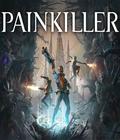
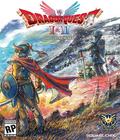
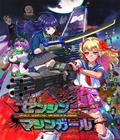




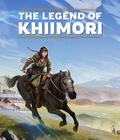

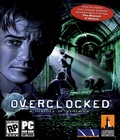 Overclocked is a psychological thriller which uses many technical innovations and a surprising narrative approach to form an eerily real gaming experience.
Overclocked is a psychological thriller which uses many technical innovations and a surprising narrative approach to form an eerily real gaming experience.
















































